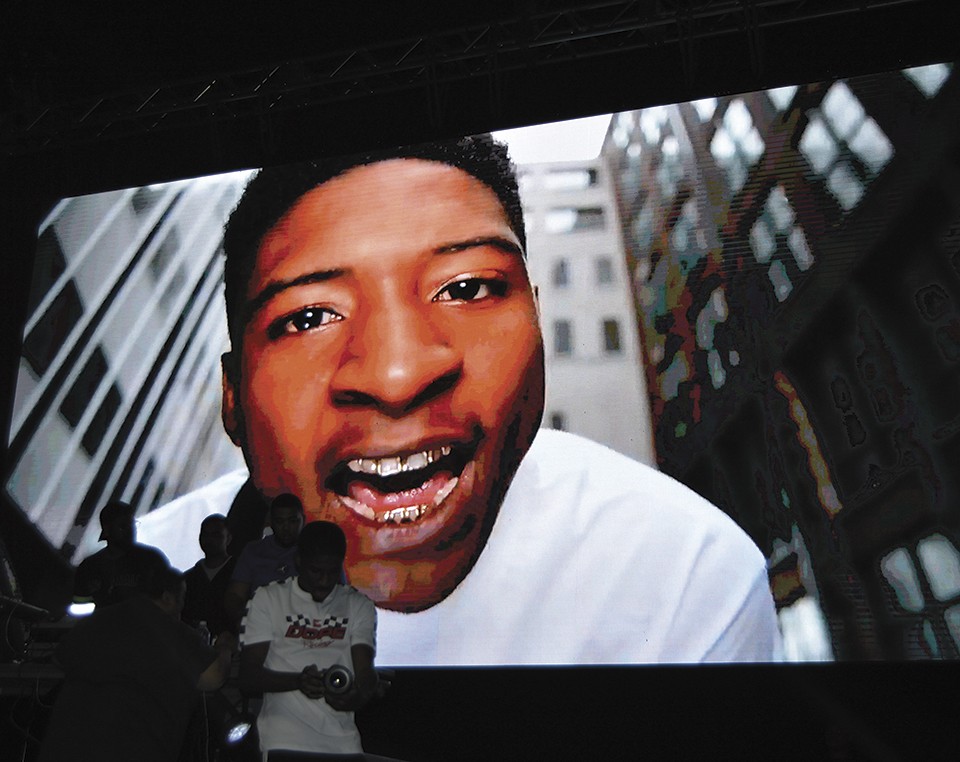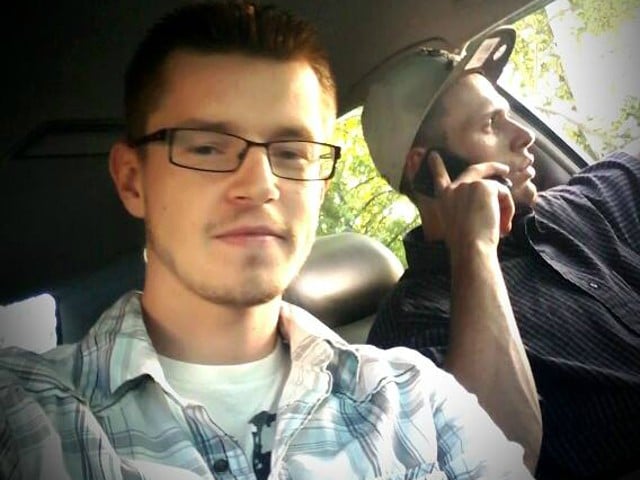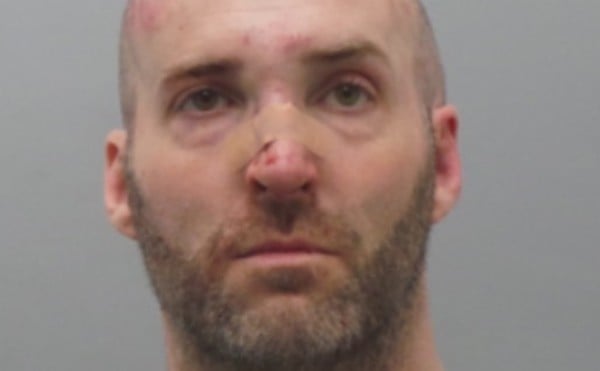St. Louis rap ruled charts in the early 2000s, with Nelly and Chingy's platinum hits revolving around hotel rooms, shiny jewels, tight jeans, slurred "rrr"s and lots of hometown pride.
But the party ended a decade ago. Chingy's fallen off, Nelly's facing sexual assault charges and today's St. Louis rappers don't have much in the way of national hits or media coverage. No one buys records anymore, and so instead the local scene is centered mostly around YouTube. It's much darker. Drenched in blunt smoke, these videos are filmed in front of crumbling brick buildings. The production values are high, the verité quality disturbing. Artists still in high school point actual guns at the camera, threatening rival gangs. The subject matter is often not fictionalized, instead depicting true-to-life neighborhood rivalries and personal beefs.
These videos lead to actual killings. "In St. Louis, when you make a diss song, you have to be ready to die off of it," says rapper Kosta Longmire, of the St. Louis group Gold Heart Family. That's a big reason St. Louis hip-hop has been without breakout stars in recent years. The good ones keep getting murdered.
After a long drought someone is finally set to break nationally, a young rapper from the city named Antonio Harris, also known as LA4SS. Growing up in a family waterlogged with despair, legal trouble and tragedy, he's found an artistic voice — equal parts brutal and enchanting — that's captivated north city, north county and beyond.
Only twenty years old, he's already done time in federal prison and seen the people closest to him murdered. Rumors abound that he's got major, pressing beefs he's not anxious to squash.
Under the mentorship of a famed local promoter, he still might have a chance. He blew the roof off of Chaifetz Arena last month, and major labels are circling. But to some observers of the scene, the most amazing thing about LA4SS isn't his rise.
It's that he's still alive.
The nickname "LA4SS" is hard to parse; it's pronounced "L.A. Fours" or just "L.A." That doesn't reference Los Angeles, but rather "Little Antonio." "He had a friend named Lil A who killed himself, so he called himself LA to keep the name alive," rapper Swagg Huncho, a collaborator, explained three years ago. "4" references his neighborhood set, and the SSs at the end are so it sounds cool.
It's a name as cryptic as Harris' own story, one he doesn't like to talk about. Though he's spoken with this reporter in the past, he declined to be interviewed for this piece. His manager says he's wary of self-incrimination, perhaps understandable considering Harris is on probation and due back in court later this month on a charge of resisting arrest. Interviews with a wide array of friends, collaborators and close observers paint him as someone who's short on trust. It makes sense; he's faced chaos since his first days.
Harris raps about the drug dealing and violence that enveloped his childhood growing up on the "West Side" near Page and Union, a part of the city known to some as 51 Skan. According to statistics compiled by the St. Louis Post-Dispatch, the surrounding Academy/Sherman Park neighborhood has a higher crime rate than 62 other neighborhoods in the city, out of 77, with 59 incidents of violent crime in the past six months, including two homicides. By all accounts Harris' upbringing was rough. "Unfortunately, he was exposed to a lot of criminality at a young age," his lawyer Andy Sottile said at Harris' January 2017 sentencing in federal court, revealing that his client was diagnosed with depression at a young age.
"He really come from it," says rapper Lil St. Louis, who over the years has shared management with Harris. "His daddy still in the street. Ever since I been knowing 4SS I been worried about him. The way he lived; the way he came up."
At an age when most boys are entering high school, meeting girls and studying for driver's tests, Harris was getting gold fronts on his teeth and tattoos on his chest, and engaging in caustic disputes with adversaries. He began making music in earnest around age sixteen, finding unexpected success after performing a verse posted to a friend's Instagram.
"I didn't even think it would get a hundred views," he told the St. Louis American in 2015. "But after that they were like, 'You might as well rap.' They put me in the booth. We dropped the first song, and it just got a buzz from there."
Even among hard-edged rappers, Harris stands out for his intensity. It's unnerving. Don't expect comic relief or syrupy odes to girlfriends in his songs; he's 100 percent serious, focused on life and death in the streets. And it's been that way since the start. In his 2015 video "Intro," he stands shirtless on an Illinois riverbank, the Arch in view across the Mississippi. Over a simple, naked beat, he squints in a series of extreme close-ups, pouring out his darkest agony in staccato bursts.
Have you ever seen your partner get hit with a 9?
You man's leaking everywhere, you know he 'bout to die
Have you ever seen your best friend mama cry
Because her son was the one in that homicide?
Harris' music doesn't glorify black violence for the entertainment of white audiences, a charge often levied against gangsta rap. Instead, it's an unflinching expression of the deep suffering many residents north of Delmar know so well.
Harris' manager Slim Cunningham, a veteran St. Louis impresario known as LooseCannon, has worked with the most popular rappers in the country. He says he knew immediately that LA4SS was a major talent.
"When I looked at his videos I was like, 'This dude got it,'" Cunningham says. "Some people got it in their eyes, man. It's like magnetism. The way people crowd around you. It's that star shit."
Harris' journey to the top of the St. Louis heap would not be a simple one, however. Though his charisma was never in question, a hundred other factors seemingly contrived to try to take him down. To survive he was forced to embark upon journeys both figurative and literal, descending into a pit of despair seemingly without bottom.








